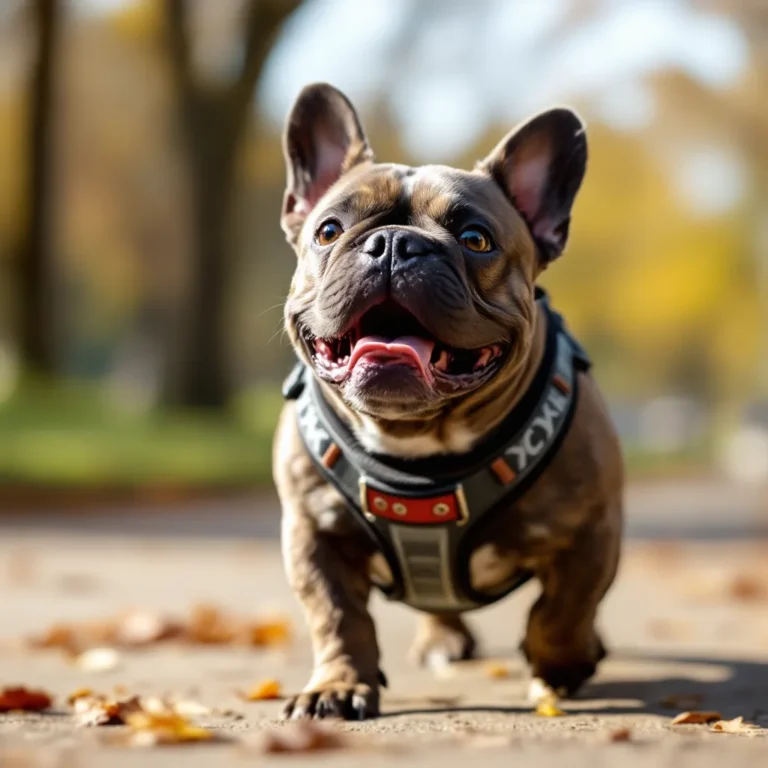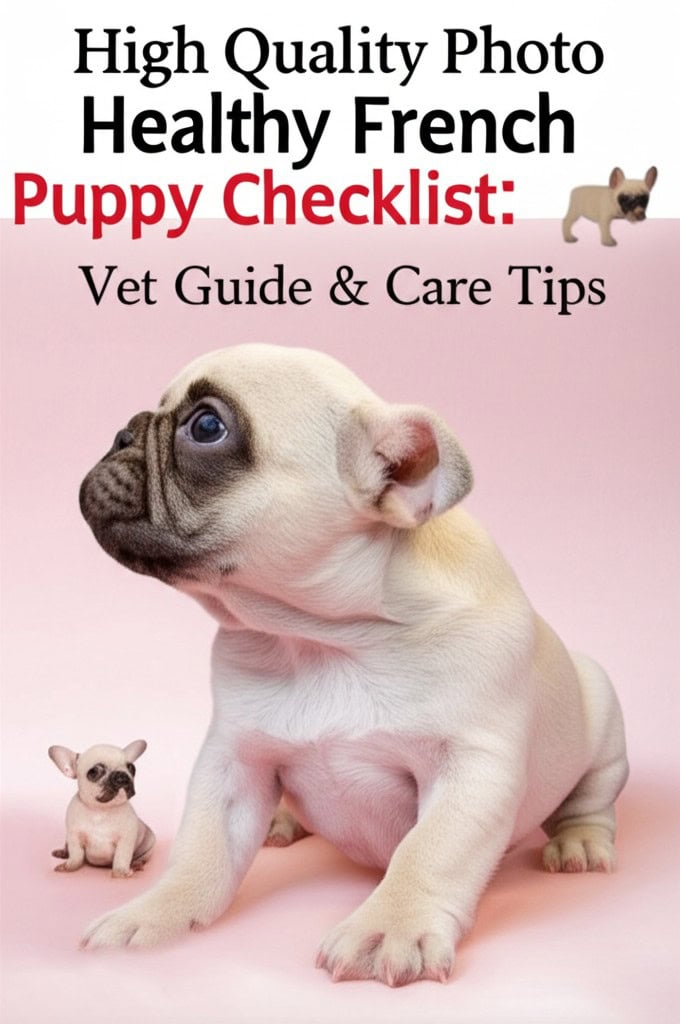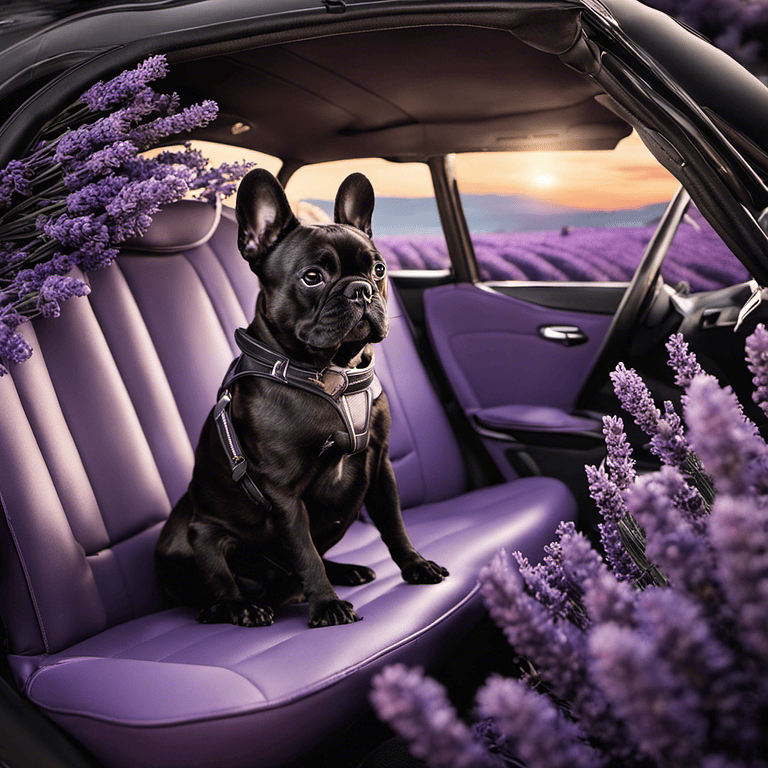Fact: A French Bulldog can collapse from heat stroke—a dangerous progression of Heat Exhaustion in French Bulldogs—in under ten minutes on an 80 °F (27 °C) day—even in the shade..
Brachycephalic (flat-faced) breeds overheat up to 10 times faster than dogs with normal muzzles. If you wait for the textbook “panting or drooling” signs, you’re already behind. One missed cue can lead to organ failure and a vet bill north of $5,000—or death.
Key Takeaways
- Heat kills Frenchies faster than any other single factor—recognize the subtle pre-collapse signals early.
- Stop activity the instant body temp hits 103.5 °F (39.7 °C); anything above 105 °F (40.5 °C) is an immediate vet run.
- Keep a “cool-down kit” in your car: collapsible kiddie pool, 2 L frozen water bottles, instant ice packs, thermometer.
- Muzzles, excitement, and obesity triple risk—obesity prevention is non-negotiable.
- Emergency protocol: cool (not ice-cold) water + fan within 3 minutes, then ER even if the dog looks “fine.”
- Post-event recovery matters—monitor for hidden kidney damage for at least 72 hours.
Why French Bulldogs Melt Faster Than Every Other Breed

Anatomy Works Against Them
- Compressed airway means less heat can escape through panting.
- Short nasal turbinates reduce evaporative cooling by up to 60 %.
- Narrow trachea chokes off airflow when stress + heat climbs.
- Thick neck skin folds trap radiant heat closer to the carotid arteries.
The Boiling Point Ratio
Average dog: safe to 85 °F (29 °C) with shade and water.
French Bulldog: red-zone at 75 °F (24 °C) when humidity hits 60 %.
Phase-by-Phase Breakdown: Signs You’ve Never Been Told
Phase 1 – Invisible Overheat (102.8–103.5 °F)
- Glossy stare—eyes appear to “glass over” for 1–2 seconds.
- Swallow-gulps—not panting yet, but constant tiny swallows.
- Ear heat spike—feel the pinna (ear flap); if it’s hotter than your own skin, start cooling.
Phase 2 – Rapid Spiral (103.5–105 °F)
- Panting doubles in speed every 15 seconds.
- Nostrils flare into perfect circles—never ignore this shape change.
- Gums shift from bubble-gum pink to brick-red.
- The “frog sit” collapse—rear legs splayed, front legs straight.
Phase 3 – Critical Failure (>105 °F)
- Gums turn purple/gray; tongue looks like raw steak.
- Shallow breaths turn to open-mouth gasps.
- Seizures, projectile vomiting, or uncontrolled diarrhea.
- Temperature can spike to 108 °F in three more minutes.
DIY Temperature Check That Beats Any App

- Use a $7 digital rectal thermometer—lubricate with coconut oil.
- Insert 1 inch; hold for 10–12 seconds.
- Real-time rule: If it reads 104 °F or higher, skip ice packs—go straight to car A/C and phone the ER.
The 180-Second Emergency Protocol
Step 1 – Immobilize the Brain
Excitement increases temperature by 0.5 °F every 30 seconds. Speak in a monotone voice and physically block movement.
Step 2 – Micro-Climate in Your Car
- Back seat, AC on max, re-circulate not fresh-air mode.
- Drape a soaked towel over vents for secondary evaporative cooling.
Step 3 – Water, Not Ice Bath
- Ice causes peripheral vasoconstriction and traps heat in the core.
- Target 60–65 °F (15–18 °C) running water or soaked towels.
- Chest, groin, neck—hit major arteries, not just the back.
Step 4 – Vet Bypass Decision Tree
- If temp drops to 103 °F within 10 minutes, still go to ER.
- If temp stays above 104 °F after 10 minutes, lights and siren.
Cool-Down Kit Checklist You Can Build for $47
| Item | Cost | Purpose |
|---|---|---|
| Collapsible kiddie pool (24″) | $12 | Full body immersion |
| Frozen 16-oz water bottles x2 | $2 | Place under armpits/groin |
| Instant cold packs x6 | $9 | Slap-on for hikes |
| Rectal digital thermometer | $7 | 180-second spot readings |
| 2-L insulated bottle | $10 | Store cool water 8 hrs |
| Rubber collapsible bowl | $4 | Drinking bowl + pour spot |
| Beach umbrella clamp | $3 | Instant shade anywhere |
Prevention Protocols Worth More Than Insurance
1. Activity Band System
Use colored silicone bracelets on your leash:
- Green (75 °F or under)—normal play.
- Yellow (75–85 °F)—10-minute max fetch.
- Red (85 °F+)—walk on grass only, carry bottle with healthy frozen snacks.
2. Hydration Formula
You need 4 oz (120 ml) of water per 10 lb body weight per hour of outdoor exposure.
A 22-lb Frenchie requires 9 oz every 60 min. Track it with a marked bottle.
3. Indoor Fortress Method
- Create a 3-airflow zone: open window + fan + AC vent aimed at one corner.
- Place a cooling mat made of pressure-activated gel ($25) in that corner.
- Freeze probiotic-rich bone broth in Kongs for distraction and electrolytes.
4. Body-Shape Optimization
Obesity reduces heat tolerance by roughly 25 %. Even a 2-lb surplus on a Frenchie equals wearing a heavy sweater in July. Lock in a strict diet plan and use mental enrichment games to burn calories indoors.
Myths That Kill
“Shaving Helps”
Double-coated breeds benefit from shaving; single-coated Frenchies do not. Shaving exposes skin to sunburn and can increase radiant heat absorption by 15 %.
“Panting Always Means Hot”
Excitement
Positional stress from a tight crate collar or anxiety from separation anxiety can trigger panting without heat. Always confirm with a thermometer.
“Splashing Water = Cooling”
Water only works if evaporation occurs. On high-humidity days >70 % RH, water becomes a heat trap. Add a battery fan or move the dog indoors.
Post-Heat-Stroke Care: The Hidden 72-Hour Window

24-Hour Checkpoint
- Warm snout overnight (normal) vs. persistently hot (kidney stress).
- Urine output—less than 1.5 ml/kg/hr means possible acute kidney injury.
48-Hour Checkpoint
- Check gums for pinpoint bruising (indicates DIC—disseminated intravascular coagulation).
- Offer low-sodium bone broth to flush kidneys; avoid kibble for 24 hr.
72-Hour Checkpoint
- If all vitals normalize, reintroduce omega-3 supplements to reduce systemic inflammation and schedule a full blood panel.
Frequently Asked Questions
Q1: Can I use a cooling vest all day long?
No—cooling vests lose 50 % effectiveness after 30 min in direct sun. Alternate 20 min on, 20 min off in shade or A/C.
Q2: My Frenchie only overheats when strangers visit; what gives?
That’s territorial stress + physical demands of barking. Train guests to ignore the dog for the first 5 min and desensitize guarding triggers indoors first.
Q3: Are puppy Frenchies at higher risk?
Puppies under 6 months have immature thermoregulation and twice the metabolic heat load per pound. They need 30 % more pauses per minute of play.
Q4: Elevated beds—yes or no?
Yes, but only designs with mesh bottom + 7-inch clearance for airflow. Avoid cushioned raised beds on hot surfaces like concrete.
Q5: Does age affect heat tolerance?
Every year past age 6 lowers respiratory reserve by roughly 3 %. Owners should reduce outdoor exposures by 10 % annually after that.
Conclusion – One Decision Prevents Years of Regret
Heat stroke in French Bulldogs is not an accident—it’s a predictable failure of preparation. You now have the checklist that separates survivors from statistics: the 3-minute emergency protocol, the $47 kit, and the invisible early signs 99 % of people miss.
Print this article. Laminate the kit checklist. Share the link with every Frenchie owner you know. Bookmark our Health 101 guide for future reference. If you wait until “they look hot,” you’re already in Phase 2.
References
- AVMA – Pet Safety in Heat Weather
- ASPCA – Hot Weather Safety Tips
- American Kennel Club – Heatstroke in Dogs
- VetTechPrep – Brachycephalic Heat Stroke
- University of Minnesota – Canine Heatstroke Handout
- National Library of Medicine – Canine Heat Stress Study
- Merck Manual – Heatstroke in Small Animals
- Too Smart Dogs – Cooling Products for Dogs
Hi, I’m Alex! At FrenchyFab.com, I share my expertise and love for French Bulldogs. Dive in for top-notch grooming, nutrition, and health care tips to keep your Frenchie thriving.


